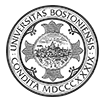Doctor of Science in Dentistry (DScD) in Applied Biomechanics
The DScD in Applied Biomechanics is open to applicants with a degree in dentistry, exhibiting a desire for concomitant rigorous exposure to scientific methodology and research. The program provides training in biomechanics of both biomaterials and biological structures with a strong focus on dental restorations. It is geared toward professionals pursuing a career within, or in support of, the dental sector, e.g., academics, research, industry, or in public health service. The three-year DScD program in Applied Biomechanics will familiarize dentists with engineering concepts within the framework of restorative dentistry in general. This will allow them to integrate sound scientific principles into an evidence-based decisionmaking process during the restoration of craniofacial anatomical structures.
Learning Outcomes
The fundamental educational values of the DScD in Applied Biomechanics are embodied in learning outcomes, associated with the curriculum of the program. Upon completion of the DScD in Applied Biomechanics, students should be able to:
- Master an in-depth understanding of the foundational concepts that govern dental restorations in relation to their biomechanical performance.
- Achieve an advanced-level breadth in areas complementary to restorative sciences, with an emphasis on principles of applied biomechanics and craniofacial engineering, that affect their clinical outcome.
- Have the ability to independently design, plan, and conduct complex research projects in a scientifically sound approach.
- Engage in critical and constructive thinking to analyze and solve biomechanical problems of a clinical nature (e.g., optimize treatment protocols whilst selecting the appropriate restoration parameters).
- Communicate advantages and disadvantages of a specific restorative approach in relation to biomechanical performance, in a clear and effective manner to an audience consisting of either patients or professionals in the broader area of craniofacial engineering (whether orally/presenting or in writing).
- Participate or guide teamwork, whilst engaging scientists of a multidisciplinary origin (e.g., healthcare professionals and engineers) toward the development and optimization of restorations for the effective treatment of patients.
- Influence healthcare professionals to implement new treatment modalities and policies, whilst considering the respective biomechanical and clinical aspects.
Requirements
As a multidisciplinary program, introductory lectures will be provided to all students enrolling in the DScD in Applied Biomechanics, to refresh/update their background on subject-specific skills and academic areas required for this degree.
Curriculum
Term I
- SDM OB 830 Research Writing
- SDM PR 825 Postdoctoral Biomaterials
- SDM RS 994 Research: Restorative Sciences
Term II
- SDM PR 825 Postdoctoral Biomaterials
- SDM RS 804 Biostatistics
- SDM RS 994 Research: Restorative Sciences
Term III
- SDM RS 801 Biomechanics & Craniofacial Engineering
- SDM RS 995 Research: Restorative Sciences
Term IV
- SDM RS 802 Advanced Principles of Restorative Sciences
- SDM RS 995 Research: Restorative Sciences
Term V
- SDM RS 803 Dental Biomechanics in Clinical Practice
- SDM RS 996 Research: Restorative Sciences
Term VI
- SDM RS 996 Research: Restorative Sciences
Completion is not tracked by unit accumulation but by successful completion of individual courses and duration requirements.

